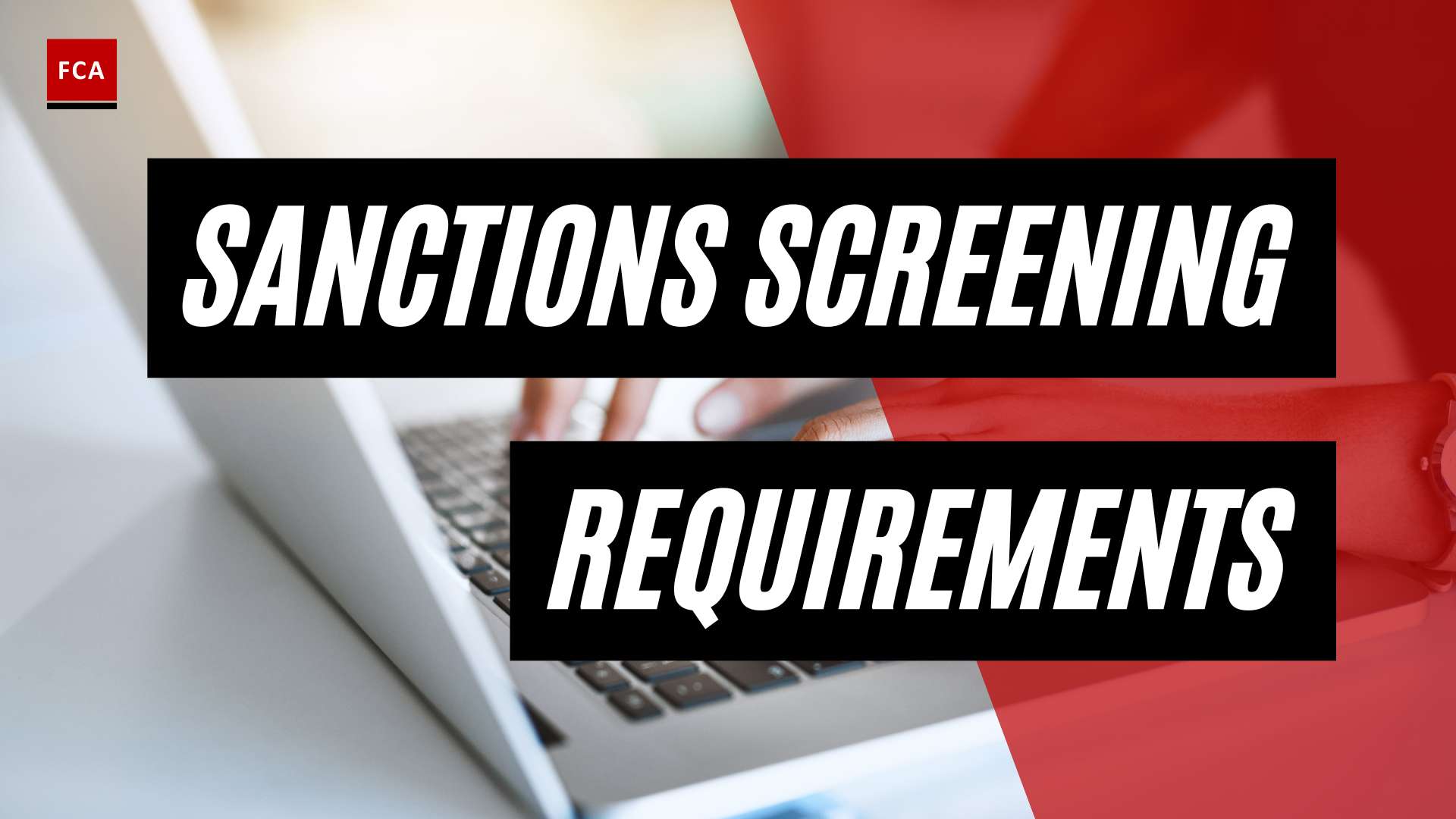Understanding AML Compliance
To effectively combat money laundering activities and maintain the integrity of the financial system, institutions such as banks, money service businesses, and casinos rely on Anti-Money Laundering (AML) compliance officers. These professionals play a crucial role in ensuring that organizations adhere to the legal and regulatory requirements aimed at preventing money laundering and the financing of illegal activities. This section provides an overview of AML compliance and emphasizes the importance of implementing robust AML compliance programs.
An Overview of AML Compliance
AML compliance refers to the set of processes, procedures, and measures put in place by organizations to detect, prevent, and report suspicious activities related to money laundering. Money laundering involves disguising the origins of illegally obtained funds, making them appear legitimate. By implementing rigorous AML compliance measures, institutions can protect themselves and the financial system from being used for illicit purposes.
AML compliance programs typically include several key components, such as:
- Risk assessments: Conducting AML risk assessments allows organizations to identify and quantify the specific risks they face in relation to money laundering. This assessment helps in designing appropriate controls and allocating resources effectively.
- Policies and procedures: Developing and implementing comprehensive AML policies and procedures that outline the steps to be taken to prevent money laundering activities. These policies should cover customer due diligence, reporting suspicious transactions, and internal controls.
- Training and education: Providing ongoing training and education to employees about money laundering risks, red flags, and their responsibilities in detecting and reporting suspicious activities. A well-informed and trained staff is essential in maintaining a strong AML compliance culture.
- Transaction monitoring: Implementing robust transaction monitoring systems to identify unusual or suspicious patterns of transactions. These systems use various techniques, such as rule-based alerts and anomaly detection, to flag potentially illicit activities.
- Reporting obligations: Establishing mechanisms to report suspicious transactions to the appropriate regulatory authorities. AML compliance officers are responsible for ensuring that suspicious activity reports (SARs) are filed in a timely and accurate manner.
Importance of AML Compliance Programs
AML compliance programs are vital for organizations to protect themselves from reputational damage, financial losses, and regulatory penalties. By implementing effective AML compliance programs, institutions demonstrate their commitment to combating money laundering and maintaining the integrity of the financial system.
The consequences of non-compliance with AML regulations can be severe. Regulatory authorities have the power to impose significant fines, revoke licenses, and impose criminal charges on organizations and individuals involved in money laundering activities. Additionally, non-compliance can lead to reputational damage, loss of customer trust, and increased scrutiny from regulators.
Organizations with robust AML compliance programs not only mitigate the risks associated with money laundering but also create a culture of compliance within the institution. AML compliance officers play a critical role in designing, implementing, and monitoring these programs, ensuring that the organization stays ahead of evolving money laundering techniques and regulatory requirements.
To stay up-to-date with the ever-changing AML landscape, AML compliance officers must continuously enhance their knowledge and keep abreast of the latest AML regulations and best practices. By doing so, they can effectively fulfill their responsibilities and help their organizations maintain a strong AML compliance framework.
In the next sections, we will delve into the roles and responsibilities of AML compliance officers, as well as the development of effective AML compliance programs.
Roles and Responsibilities of AML Compliance Officers
AML compliance officers play a crucial role in ensuring that financial institutions adhere to anti-money laundering (AML) regulations and prevent illicit activities such as money laundering and funding of terrorist activities. Let’s explore the key responsibilities and the necessary skills and qualifications for AML compliance officers.
Key Responsibilities of AML Compliance Officers
The primary responsibility of AML compliance officers is to develop and implement AML compliance programs within financial institutions. These programs are designed to detect and prevent money laundering activities, ensuring that the institution remains compliant with AML regulations.
Some of the key responsibilities of AML compliance officers include:
- Conducting AML risk assessments to identify potential risks and vulnerabilities within the institution.
- Developing and implementing AML policies and procedures that align with regulatory requirements and the institution’s risk tolerance.
- Conducting ongoing monitoring and transaction monitoring to identify suspicious activities and report them as required.
- Performing customer due diligence to assess the potential money laundering risks associated with customers, products, and services.
- Evaluating and enhancing the effectiveness of the AML compliance program through periodic reviews and audits.
- Training employees on AML requirements, policies, and procedures to ensure a culture of compliance within the institution.
- Keeping up-to-date with changes in AML regulations and industry best practices to adapt the institution’s processes accordingly.
By fulfilling these responsibilities, AML compliance officers play a crucial role in maintaining the integrity of the financial system and preventing illicit activities.
Skills and Qualifications for AML Compliance Officers
To effectively carry out their responsibilities, AML compliance officers require a specific set of skills and qualifications. Some essential skills for AML compliance officers include:
- Strong analytical skills to assess complex transactions and identify potential red flags.
- Attention to detail to ensure accuracy in monitoring and reporting suspicious activities.
- Good communication skills to effectively collaborate with internal stakeholders, regulators, and law enforcement agencies.
- Knowledge of AML regulations, industry standards, and best practices to ensure compliance.
- Ability to work well under pressure and meet deadlines in a fast-paced and constantly evolving regulatory environment.
- Ethical conduct and a high level of integrity to maintain the confidentiality of sensitive information.
- Problem-solving and decision-making abilities to address compliance-related issues and recommend appropriate solutions.
In terms of qualifications, AML compliance officers often hold relevant certifications such as AML certification programs that provide comprehensive knowledge of AML regulations, risk management, and compliance practices. These certifications demonstrate a commitment to professional development and expertise in the field.
By possessing the necessary skills and qualifications, AML compliance officers can effectively fulfill their role in safeguarding financial institutions from money laundering and other illicit activities.
In the next sections, we will explore how AML compliance officers can develop effective AML compliance programs, stay up-to-date with AML regulations, and the impact of non-compliance with AML regulations.
Developing an Effective AML Compliance Program
To combat money laundering and other financial crimes, financial institutions rely on AML compliance officers to develop and implement robust AML compliance programs. These programs are designed to ensure that the institution complies with relevant regulations and effectively mitigates the risk of money laundering. Developing an effective AML compliance program involves designing the program, implementing AML policies and procedures, and conducting AML risk assessments.
Designing an AML Compliance Program
Designing a comprehensive AML compliance program is the first step in establishing a strong framework for combating money laundering. This involves creating a structure that aligns with the organization’s size, complexity, and risk profile. The program should outline the institution’s commitment to AML compliance and establish clear lines of responsibility and accountability.
The key components of a well-designed AML compliance program may include:
- Internal Controls: Implementing systems and procedures to monitor and detect unusual or suspicious activities, such as transaction monitoring and customer due diligence processes.
- Policies and Procedures: Developing comprehensive policies and procedures that outline the organization’s commitment to AML compliance and provide guidance on how to identify, report, and mitigate potential money laundering risks.
- Training and Education: Providing regular training and education to employees to ensure they understand their role in AML compliance and are aware of the latest regulatory requirements.
- Recordkeeping and Reporting: Establishing procedures for maintaining accurate records and filing timely reports as required by regulatory authorities.
- Independent Testing and Audit: Conducting regular independent testing and audit of the AML compliance program to assess its effectiveness and identify areas for improvement.
Implementing AML Policies and Procedures
Once the AML compliance program is designed, it is crucial to implement AML policies and procedures to operationalize the program. These policies and procedures provide guidance to employees on how to identify and handle potential money laundering risks and ensure consistency in AML compliance across the organization.
Some key elements to consider when implementing AML policies and procedures include:
- Customer Due Diligence (CDD): Establishing procedures for verifying the identity of customers and conducting ongoing monitoring to detect and report suspicious activities.
- Transaction Monitoring: Implementing systems and processes to monitor transactions for potential suspicious activities and promptly investigate and report any identified risks.
- Know Your Customer (KYC): Developing procedures to gather and verify relevant customer information to assess and manage the risk associated with each customer relationship.
- Reporting and Recordkeeping: Establishing protocols for filing required reports, such as suspicious activity reports (SARs), currency transaction reports (CTRs), and maintaining accurate records of customer information and transactions.
Conducting AML Risk Assessments
To ensure the effectiveness of the AML compliance program, regular AML risk assessments should be conducted. These assessments help identify and evaluate potential risks associated with the institution’s products, services, customers, and geographic locations.
During an AML risk assessment, the institution should consider factors such as:
- Customer Risk: Assessing the risk associated with different customer types, including high-risk customers such as politically exposed persons (PEPs) and those engaged in certain high-risk industries.
- Product and Service Risk: Evaluating the risk associated with different products and services offered by the institution, such as correspondent banking or private banking.
- Geographic Risk: Assessing the risk associated with operating in different geographic locations, considering factors such as the prevalence of money laundering and the effectiveness of local AML regulations.
- Internal Control Risk: Reviewing the effectiveness of the institution’s internal controls and procedures to detect and mitigate money laundering risks.
By conducting regular AML risk assessments, institutions can identify gaps and weaknesses in their AML compliance program and take proactive steps to address them.
Developing an effective AML compliance program requires careful planning, thoughtful design, and ongoing monitoring and assessment. By designing the program, implementing AML policies and procedures, and conducting AML risk assessments, AML compliance officers play a crucial role in safeguarding financial institutions against the risks of money laundering and other financial crimes.
For more information on AML compliance programs and best practices, refer to our article on aml compliance program.
Staying Up-to-Date with AML Regulations
To effectively carry out their responsibilities, AML compliance officers must stay up to date with the latest trends and technologies in financial services and AML regulations. Staying informed about AML regulations is crucial for maintaining the integrity of the AML compliance program and ensuring that the organization remains compliant with relevant laws and regulations.
Importance of Continuous Learning for AML Compliance Officers
Continuous learning is essential for AML compliance officers to stay abreast of evolving AML regulations and best practices. It enables them to enhance their knowledge, skills, and understanding of the dynamic landscape of anti-money laundering compliance. By staying up to date, compliance officers can effectively identify and address emerging risks, implement appropriate controls, and contribute to the organization’s overall risk management efforts. Continuous learning also helps them adapt their AML policies and procedures to align with changing regulatory requirements.
By staying informed about the latest AML regulations, compliance officers can effectively educate and train other employees within the organization, ensuring that everyone understands their role in preventing money laundering and terrorist financing. This knowledge empowers employees to recognize suspicious transactions, report them, and contribute to the overall effectiveness of the AML compliance program.
Resources for Staying Informed about AML Regulations
AML compliance officers have access to various resources that help them stay informed about AML regulations and industry best practices. These resources provide valuable insights, updates, and guidance to ensure compliance with AML laws and regulations.
Some of the key resources for AML compliance officers include:
- Industry Associations and Organizations: Industry associations and organizations, such as the Financial Crime Academy (FCA) offers a wealth of resources, including conferences, webinars, publications, and certification programs. These resources provide valuable insights into current AML trends, regulatory developments, and case studies.
- Regulatory Authorities: Regulatory authorities, such as the Financial Action Task Force (FATF) and local financial regulatory bodies, regularly publish guidelines, reports, and updates related to AML regulations. Compliance officers should regularly review these publications to stay informed about the latest regulatory requirements and expectations.
- Training and Education Programs: AML compliance officers can participate in training and education programs tailored to their professional development needs. These programs provide in-depth knowledge about AML regulations, risk assessment methodologies, and compliance strategies. Certification programs, such as the Certified Anti-Money Laundering Specialist (CAMS) certification, are highly regarded in the industry and can enhance the credibility and expertise of compliance officers.
- Industry Publications and Newsletters: Industry publications and newsletters, both in print and online, offer valuable insights into AML regulations, industry trends, and case studies. Subscribing to these publications can help AML compliance officers stay up to date with the latest developments and best practices in the field.
- Networking: Networking with peers and industry professionals through professional associations, conferences, and online forums can provide valuable opportunities to exchange knowledge, share experiences, and discuss emerging AML issues. Engaging in these networks can help compliance officers gain insights into practical implementation challenges and innovative approaches to AML compliance.
By actively engaging with these resources, AML compliance officers can stay informed about AML regulations, expand their knowledge base, and enhance their effectiveness in carrying out their responsibilities.
As the regulatory landscape continues to evolve, it is vital for AML compliance officers to remain vigilant and proactive in their pursuit of knowledge. Staying up to date with AML regulations is not only a professional obligation but also a critical component of safeguarding the financial system and protecting organizations from the risks associated with money laundering and terrorist financing.
The Impact of Non-Compliance with AML Regulations
Ensuring compliance with Anti-Money Laundering (AML) regulations is of utmost importance for financial institutions and businesses. Failure to comply with these regulations can have severe consequences, including financial penalties, reputational damage, and in some cases, criminal charges for individuals involved. It is crucial for organizations to understand the potential consequences of non-compliance and take proactive measures to mitigate these risks.
Consequences of Non-Compliance with AML Regulations
The penalties for non-compliance with AML regulations can vary depending on the jurisdiction and the severity of the violation. In some cases, financial regulatory bodies have the authority to impose significant fines on non-compliant entities. For example, in Canada, the Financial Transactions and Reports Analysis Centre of Canada (FINTRAC) can impose Administrative Monetary Penalties (AMPs) for non-compliance with the Proceeds of Crime (Money Laundering) and Terrorist Financing Act.
According to FINTRAC, the penalties for non-compliance can range from thousands to millions of dollars, depending on the nature and extent of the violation. The penalties are determined based on a harm done assessment, which considers factors such as the level of risk, the duration of non-compliance, and the entity’s compliance history. It is important to note that administrative penalties cannot be issued for the same instances of non-compliance for which criminal charges have been laid (FINTRAC).
In addition to financial penalties, non-compliance with AML regulations can result in reputational damage for organizations. Negative publicity and loss of trust from customers and stakeholders can have long-lasting effects on a company’s brand and business relationships. Rebuilding trust and credibility in the market may be a challenging and time-consuming process.
Case Studies of AML Non-Compliance
Numerous high-profile cases of AML non-compliance have made headlines in recent years. These cases serve as a stark reminder of the potential consequences and the importance of robust AML compliance programs. While specific details and penalties may vary, they demonstrate the serious nature of AML violations.
One notable case is the money laundering scandal involving a major European bank. The bank was found to have facilitated money laundering activities, allowing billions of dollars to flow through its accounts without proper scrutiny. As a result, the bank faced significant financial penalties, loss of customer trust, and extensive reputational damage.
Another example is a case involving a cryptocurrency exchange that failed to implement adequate AML controls. The exchange was found to have facilitated illicit transactions, including money laundering and terrorist financing. The regulatory authority imposed substantial fines on the exchange and ordered it to improve its AML compliance measures.
These cases highlight the importance of maintaining a robust AML compliance program and the potential repercussions for organizations that fail to do so. Implementing effective AML policies and procedures, conducting regular risk assessments, and providing comprehensive AML training to employees are essential steps in mitigating the risk of non-compliance.
By understanding the consequences and studying real-world examples of AML non-compliance, organizations can appreciate the significance of prioritizing AML compliance and take proactive measures to prevent violations. A comprehensive and well-executed AML compliance program is crucial for the protection of businesses, the financial system, and society as a whole.
The Evolving Role of AML Compliance Officers
As the regulatory landscape and financial industry continue to evolve, so does the role of AML compliance officers. These professionals play a crucial role in ensuring that financial institutions have effective anti-money laundering (AML) compliance programs in place. Let’s explore the challenges and trends in AML compliance and take a look at the future outlook for AML compliance officers.
Challenges and Trends in AML Compliance
AML compliance officers face unprecedented challenges in today’s financial industry. Disruptive technologies, shifting demographics, increased scrutiny from regulators, and pressure from investors are just a few of the factors impacting the AML landscape (Russell Reynolds). Staying ahead of these challenges requires a deep understanding of AML regulations, emerging risks, and the ability to adapt compliance programs accordingly.
One of the key challenges for AML compliance officers is keeping up with the rapidly changing regulatory environment. AML regulations are constantly evolving, and compliance officers must stay current with the latest requirements to ensure their organizations remain compliant. Continuous learning and professional development are essential for AML compliance officers to stay abreast of the latest trends and technologies in financial services and AML regulations (Source).
Another significant challenge is the allocation of resources. Financial institutions must allocate adequate resources to maintain robust AML compliance programs. Cutting back on AML compliance spending can have serious consequences, including regulatory penalties and reputational damage (Abrigo). AML compliance officers play a critical role in advocating for the necessary resources and ensuring that compliance programs are properly funded and staffed.
Additionally, the increasing complexity of financial transactions and the use of sophisticated money laundering techniques require AML compliance officers to continuously enhance their knowledge and skills. They must be able to identify emerging risks, implement effective risk assessment methodologies (aml risk assessment), and adapt AML policies and procedures (aml policies and procedures) to address these evolving threats.
Future Outlook for AML Compliance Officers
The future of AML compliance officers is expected to be dynamic and demanding. As regulatory requirements become more stringent, the role of AML compliance officers will continue to gain importance within organizations (Financier Worldwide). AML compliance officers will be at the forefront of managing and mitigating money laundering and financial crime risks.
With the advancements in technology, AML compliance officers can expect to leverage cutting-edge tools and solutions to enhance their effectiveness. AML compliance software (aml compliance software) is becoming increasingly valuable for financial institutions, enabling automation, streamlining compliance tasks, and optimizing AML operations (Source). These technological advancements will empower AML compliance officers to manage compliance requirements more efficiently and effectively.
Furthermore, certifications for AML compliance officers are gaining recognition and can provide professionals with a competitive edge. These certifications demonstrate a commitment to continuous learning and professional development in the field of AML compliance (FCA). Choosing the right AML certification program (certifications for aml compliance officers) can help AML compliance officers enhance their knowledge, skills, and credibility.
In conclusion, the role of AML compliance officers is evolving in response to the changing regulatory landscape and emerging risks. AML compliance officers must navigate the challenges and stay ahead of the trends in AML compliance. By embracing continuous learning, leveraging technology, and advocating for robust compliance programs, AML compliance officers will continue to play a vital role in safeguarding the integrity of the financial system.
Utilizing AML Compliance Software
In the fight against financial crime, AML compliance software has become an essential tool for financial institutions. This software encompasses various technologies that automate, streamline, and optimize compliance tasks, helping organizations meet the required AML regulations. By leveraging artificial intelligence and data science, AML software enhances the efficiency and accuracy of AML operations and management (Source).
Benefits of AML Compliance Software
The utilization of AML compliance software offers several benefits to financial institutions:
- Automation and Efficiency: AML software automates manual processes, reducing the need for time-consuming manual reviews and increasing operational efficiency. This allows compliance officers to focus their efforts on high-risk activities and complex investigations.
- Risk Mitigation: AML software helps organizations identify and mitigate risks associated with money laundering, terrorist financing, and other financial crimes. By leveraging advanced algorithms, it can analyze large volumes of data and flag suspicious transactions or behavior for further investigation.
- Accuracy and Consistency: AML software ensures consistency and accuracy in compliance measures by applying predefined rules and criteria. It minimizes human error and provides a standardized approach to compliance across the organization.
- Enhanced Customer Due Diligence: AML software facilitates customer due diligence processes by automating identity verification and screening against sanctions and politically exposed persons (PEP) lists. This allows financial institutions to quickly identify and assess the risk associated with their customers.
Key Features of AML Compliance Software
AML compliance software offers a range of features and functionalities that support effective compliance programs. These features may include:
- Identity Verification: AML software incorporates tools for identity verification, enabling financial institutions to authenticate customer identities and comply with know your customer (KYC) requirements.
- Transaction Monitoring: AML software monitors financial transactions in real-time, using sophisticated algorithms to detect patterns and anomalies that may indicate suspicious activity.
- Case Management: AML software provides a centralized platform for case management, allowing compliance officers to track and manage investigations efficiently. It enables collaboration, documentation, and reporting throughout the investigation process.
- Sanctions and PEP Screening: AML software screens customer data against global sanctions lists and PEP databases. This helps identify individuals or entities with known involvement in illicit activities.
- Risk Assessment and Management: AML software assists in conducting AML risk assessments by evaluating the risk associated with customers, transactions, and business relationships. It helps financial institutions allocate resources effectively based on risk levels.
- Suspicious Activity Reporting: AML software enables the generation of suspicious activity reports (SARs) in compliance with regulatory requirements. It streamlines the SAR filing process and ensures timely reporting to the relevant authorities.
By incorporating AML compliance software into their AML compliance program, financial institutions can enhance their ability to combat financial crime. However, it’s important to note that AML software should be part of a broader AML compliance framework and implemented as part of a risk-based approach tailored to the specific requirements of the institution (Source).
Stay tuned as we explore more about AML compliance, including certifications for AML compliance officers and the regulatory landscape in the upcoming sections.
Certifications for AML Compliance Officers
As the role of AML compliance officers becomes increasingly important in the fight against money laundering and financial crime, obtaining relevant certifications can greatly enhance their credentials and expertise. There are several certification programs available that focus on anti-money laundering (AML) and financial crime prevention. In this section, we will provide an overview of AML certification programs and discuss the factors to consider when choosing the right certification for AML compliance officers.
Choosing the Right AML Certification
When selecting an AML certification, it is important for AML compliance officers to consider their career goals, level of experience, and specific areas of interest within the AML field. Here are some factors to consider when choosing the right certification:
- Relevance to Job Role: Consider how closely the certification aligns with your current or desired job role as an AML compliance officer. Look for certifications that cover the essential knowledge and skills required for your specific responsibilities.
- Industry Recognition: Research the reputation and recognition of the certification program within the industry. Certifications that are widely recognized and respected can enhance your professional credibility and open doors to new opportunities.
- Content and Curriculum: Review the course content and curriculum of the certification program. Ensure that it covers relevant topics, regulations, and best practices in AML compliance. Look for certifications that provide comprehensive and up-to-date knowledge in the field.
- Cost and Time Commitment: Consider the cost of the certification program, including examination fees, study materials, and any ongoing maintenance fees. Evaluate the time commitment required to complete the certification and any continuing education requirements.
- Career Advancement Opportunities: Assess how the certification can contribute to your career advancement. Research the career paths of professionals who have obtained the certification and determine if it aligns with your long-term goals.
By carefully evaluating these factors and selecting the right AML certification, compliance officers can enhance their professional competence, stay updated with the latest AML regulations, and demonstrate their commitment to maintaining the highest standards in AML compliance.
Remember to explore additional resources and training programs to complement your certification and further expand your knowledge in specific areas of AML compliance. Staying informed about the ever-evolving regulatory landscape and continuously updating your skills will contribute to your effectiveness as an AML compliance officer.
Regulatory Landscape for AML Compliance
Ensuring effective AML compliance is crucial for financial institutions and other entities to protect against money laundering activities and maintain the integrity of the financial system. AML compliance officers play a pivotal role in implementing and monitoring compliance programs. Understanding the regulatory landscape is essential for these officers. This section explores AML compliance regulations in different jurisdictions and recent developments in AML compliance regulations.
AML Compliance Regulations in Different Jurisdictions
AML compliance regulations vary across jurisdictions, as each country has its own legal framework to combat money laundering. The Fourth EU Directive on money laundering (4AMLD) mandates that credit or financial institutions appoint an AML/CFT compliance officer at a management level and a management body responsible for the implementation of AML law, regulations, and administrative provisions necessary for compliance.
In the United States, the Bank Secrecy Act (BSA) serves as the primary legislation for AML compliance. Financial institutions are required to establish AML programs and appoint a designated compliance officer. Additionally, the Financial Crimes Enforcement Network (FinCEN) issues regulations and guidance to ensure compliance with AML requirements.
Other jurisdictions, such as Canada, the United Kingdom, Australia, and Singapore, have their own AML regulatory frameworks tailored to their specific needs. AML compliance officers must stay updated with the regulations applicable to their jurisdiction and ensure that their institutions adhere to the necessary requirements.
Recent Developments in AML Compliance Regulations
AML compliance regulations continue to evolve as authorities around the world enhance their efforts to combat money laundering and terrorist financing. It is crucial for AML compliance officers to stay informed about the latest developments to ensure their programs remain effective and up to date.
For example, the European Banking Authority (EBA) released a final report in June 2022 outlining clear expectations regarding the role, tasks, and responsibilities of the AML compliance officer and management. These guidelines provide valuable insights for achieving compliance with AML regulations in the European Union.
In addition to regulatory updates, AML compliance officers should be aware of industry trends, emerging technologies, and best practices. Staying informed through industry publications, attending conferences or webinars, and participating in professional networks are essential for maintaining an understanding of the evolving landscape.
By staying abreast of regulatory changes and developments, AML compliance officers can effectively adapt their compliance programs, implement necessary measures, and ensure ongoing compliance with AML regulations. Additionally, engaging in continuous learning and leveraging resources specific to AML compliance will enable these officers to effectively fulfill their critical role in safeguarding the financial system.








